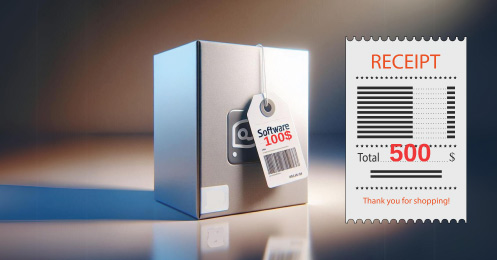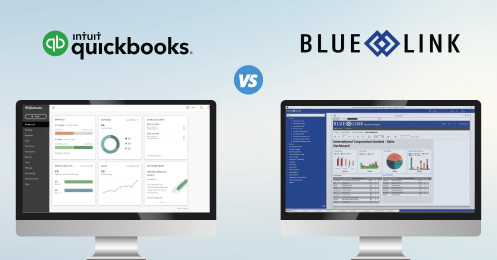What is Lot Tracking?
Lot tracking refers to a system that has the ability to properly track product lots (as in manufactured lots or batches) along the entire supply chain – from the manufacturer, through supplier and distributor to the end customer. Sometimes referred to as batch tracking, lot tracking helps your business with product traceability to keep track of which of your customers received specific groups (or shipments) of items and when they were received. The manufacturer and/or supplier you purchased from and date in which the items were purchased is also recorded allowing you to track an individual group of products (or shipment) from your supplier to your warehouse and then ultimately to your customer. Lot tracking is also used to manage inventory according to production or expiration date.
Many distributors fail to effectively track products because of the extra time and expenses necessitated by manual record keeping. In addition to the probability of human error, these records are physically cumbersome, needing maintenance and storage space. An automated lot tracking system not only tracks items throughout the distribution chain, but also provides cost tracking and basic Return Merchandise Authorization (RMA) –all error-free, with minimal space and maintenance requirements.
Lot tracking is an important concept to understand, and for some businesses, it's an integral component of distribution inventory software. This is especially true for businesses that deal with perishable goods, potentially harmful products, regulated items and products with dye lots. Lot tracking is also a core component in achieving FDA / ISO / CFIA compliance for many businesses.
Lot Tracking with Software
Lot tracking software allows companies to keep track of which customers received specific groups/batches (or shipments) of items and when they were received. The manufacturer and/or supplier's information and date these items were purchased are also tracked. Lot tracking software allows companies to easily and quickly retrieve information electronically about any particular group of products (or shipment) along the entire supply chain - functionality imperative in the face of a product recall.
Product recalls affect a variety of industries and the inability to track products along the supply chain can break a company when faced with one. Virtually any industry can be affected, such as consumer products (think children's products and furniture), automotive, and then especially food, medical and pharmaceutical products.
Lot tracking or batch tracking allows product to be traced, end-to-end, from the manufacturer through the supplier to the customer. The process is used to keep track of which customers received specific lots, allowing managers to account for product movement via various auto-generated reports. A lot or batch number can be assigned to one or many units of product that are produced or purchased on various dates and can tie into an expiry date (if applicable). An advanced lot tracking system helps automate the process and allows users to track product movement, create lot reports and facilitate recalls when necessary. This gives business owners an auto-generated list of products affected by a recall and the customers it was sold too, allowing them to quickly and efficiently contact those involved. It also allow you to perform lot costing – tracking actual costs instead of FIFO or average. In addition, and automated lot tracking system helps manage inventory based on lot number or expiration dates.
How to Track Products
Receiving Stock
- When a product is received with a vendor’s lot number already on it, then that lot number can be used in one of three ways: it can be assigned as the external lot number, it can be used as the internal lot number, or a completely new lot number can be created
- The user should be able to scan or type in the external lot number
- If a vendor does not provide a lot number, then the user should be able to assign one internally
- The internal lot number can be assigned through auto-generation or by a user-assigned number system
Inventory Control
- On product receipt, and after lot number recording, the ERP software should allow easy lot tracking through search capabilities
- It should also provide various reporting capabilities on the lot or costs
- Linking a particular lot to the receipt or original purchase order is a necessary function
- Current allocation and history should be easily viewable
- In order to ensure accurate reconciliation, the software must permit an inventory count by product and/or by lot number
Order Entry
Once a customer sales order is created, the software needs to allow selection and allocation of products by lots, to permit the various lots to be accurately linked with the shipments sent to the customer
- With lot information provided on the sales order, the picking list (for internal picking of stock) can be printed, together with the packing or shipping list for the customer
- Lot information, such as the lot number, must be clearly marked on all customers’ receipts
- A damaged or non-required product returned by a customer via a Return Merchandise Authorization (RMA) should be easily traced by lot number
- Paperwork – to track the lots shipped or being received back –is eliminated
- Lot tracking can provide a history of origin, sales order allocation, shipping date, customer identification and invoice
Automated Lot Tracking Benefits
An automated lot tracking system has many benefits, both direct and indirect, including:
- Traceability through the distribution chain, both inside and outside company premises, by integrating with the purchase order, inventory control, sales order and invoicing processes.
- The use of a different lot number other than the manufacturer’s number and tracking by either that internal number or by the manufacturer’s external lot number.
- Rapid and efficient access to product information through accurate information storage, including lot number(s), location, bin and shelf, date, weight and origin, etc. This is crucial information, especially for a product recall, a customer lot inquiry and an internal inventory count.
- Quality control by tracking raw materials and finished goods.
- Elimination of manual data entry, which is prone to errors.
- Elimination of incorrect product picking, whether for shipping or for use as raw material in the production of another finished goods item.
- Reports on inventory and status by lot number.
- Cost information by lots to be used for selling or assessing inventory.
- Communication integration with both advanced and older equipment, and other software.
- Pre-allocate lot numbers to be picked, based on FIFO or expiry date, and display those on picking slips or handheld devices.
Effective, efficient lot tracking relies on an accurate system to achieve superior quality control, inventory management, reduced costs and a stress-free business environment. Additionally, the system should provide accounting, integrated order entry, purchasing, job costing and reporting modules.
The appropriate ERP lot tracking software eliminates expensive manual product tracking by providing a fast, exact and cost-effective operating system. Therefore, it not only improves internal and external communication and efficient handling of product recalls, but also enables speedy compliance with all new health and consumer protection laws and regulations and provides the framework to take advantage of expansion opportunities.









